All driving test centres are either based in a rural area or if located in a busy town or city, are often located on the outskirts.
They are located in these areas so as many diverse road types can be taken during the driving test. Most driving test routes include rural country roads and villages. Although country roads appear to be a quiet and pleasant drive, they often produce significantly more hazards than urban roads.
This tutorial offers an explanation of the many hazards and dangers associated with country road driving and how to best be prepared for the practical driving test.
Country road condition
The condition of country roads are often lower quality than those of urban roads. Due to country roads not being as well maintained, there are often greater chances of hitting potholes. Potholes may puncture a tyre, cause wheel damage, cause defective tracking and can even damage the car mechanically.
If during a driving test, try to avoid potholes safely by either slowing down, or if safe to do so, drive around them. If vehicles are driving closely behind you or it is not safe to drive around them if on a bend, you will have no option but to drive through them.
Uneven road surface
Country roads have a tendency to be uneven. Although in dry conditions this doesn’t pose any problems, hazards occur during wet periods or after it has rained in the form of standing water. Cambers are often implemented into roads to allow water drainage. A road that has not had effective cambers built or has failing cambers due to poor maintenance or erosion can cause standing water.
- See road camber for further information
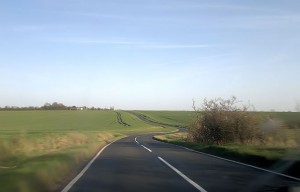
A car traveling at speed that hits standing water will aquaplane. This is where one or more of the tyres loses contact with the road surface by a layer of water. The best method for dealing with aquaplaning is to avoid it. If it is raining or has recently rained, drive at the appropriate speed for the road. If you are approaching areas in the road that are difficult to see ahead, take it slow. If you do hit standing water, don’t steer the wheels, try to keep the car straight and don’t use the brakes if possible.
- See aquaplaning for further information
Blind country bends
During a driving test, the examiner will be assessing how you deal with the various road bends on country roads. Many of these will be blind bends. A common cause of country road accidents is drivers taking these too fast and not preparing for what may be round the blind bend. Tractors and farm vehicles are of course reasonable common on country roads. Cyclists can often use such roads and avoiding a cyclists on a blind bend at high speed certainly has the potential of an accident. Narrow blind bends are commonplace on country roads. Take precaution for what may be on or around the bend and use an appropriate speed based on what you can or can’t see.
Animals on the road
Whilst driving in the country, the chances of meeting animals on the road is greatly increased. Frequent use of the interior mirror is essential on country roads as to establish if any vehicles are behind you and how close. Animals have a tendency to dash across the road right in front of you. If there are no vehicles behind you or they are not driving too close, gently slow down to try and avoid the animal.
Although it is tempting to brake harshly, try and avoid this as it may produce a skid and lead to lose of control. Current weather and road conditions should also be taken into account when braking. Driving tests have been failed due to learner drivers braking too harshly or swerving aggressively to avoid animals in the road.
Slow moving traffic
Farm traffic such as tractors and trailers are frequently seen on country roads. During a driving test, the examiner will be expecting you to overtake and make progress only if it is safe to do so. Don’t think the examiner is sitting there impatiently waiting for you to overtake. Farm vehicles are often wide and long and may be difficult to pass regardless of their speed. Before overtaking, ensure the road is clear ahead and wide enough for you to safely pass. If you feel it is not safe to overtake, remain behind the vehicle.
Horse riders
Another potential hazard on country roads are horse riders. Again as with most country road dangers, horse riders are at their most vulnerable on the tight and twisting country road bends. Once a horse and rider has been spotted, initially check the interior mirror for any traffic behind. If vehicles are behind, slow down sooner to give the vehicles time to reduce speed. The vehicles behind may not be able to see the horses. Horses and riders must be overtaken slowly at around 15 mph.
Country roads and village traffic
Although the roads may appear relatively empty, you will of course meet other traffic. Villages joined by rural roads will be used by buses. Meeting buses on rural roads and village roads often requires providing extra room by slowing down and moving to the left or even on some occasions stopping is required to allow enough room.
Overtaking on country roads
It may be necessary to overtake farm vehicles if they are traveling at a particularly slow speed. If the road is particularly hazardous however, they more often than no pull over to allow traffic past. Other than very slow moving vehicles, horses and cyclists, it is not advised to overtake other vehicles on country roads. Country roads can be deceptive and often it appears safe to overtake when it’s not. Dips in roads, bends and other junctions joining your road often hide oncoming vehicles, so unless it’s absolutely essential, don’t overtake.
Closed junctions
Junctions on rural roads are often closed (blind) and often require more skill than those found in towns and cities. Many country roads have a speed limit of 60 mph (National Speed Limit) and approaching junctions at high speeds requires excellent observational skills to assess what potential dangers lay ahead.
- See junctions for further information on closed or blind junctions.
Bad weather conditions
Driving tests are unlikely to be conducted during icy, frosty or bad fog conditions. They are however conducted during wet and rainy conditions. Remember the stopping distance doubles in wet conditions and this is especially important on country rural roads with all the potential hazards that can materialise.
- See stopping distances for further information
Country road signs
Below are UK warning signs frequently seen on rural country roads.
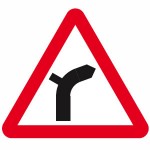
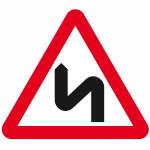
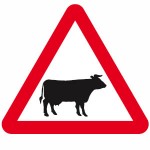
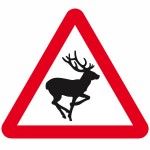
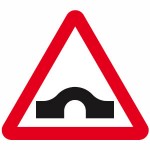
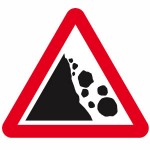
Country road driving tips
Drive at an appropriate speed. One of the main reasons why country rural roads result in the most fatal road accidents is drivers going too fast. Frequently check the interior mirror for vehicles behind and their distance from you. If they are driving too close to you, slow down especially in hazardous places like sharp bends. This will decrease the potential of a rear collision if there is a need to brake harshly. Take bends slowly. You are not only driving at a speed that you can safely stop for, but at a speed that another vehicle may also be travelling around the bend at the same time as you.
Don’t overtake unless the vehicle is very slow moving and even then, ensure you do so on a long, straight, flat road and also be aware of any junctions that may join your road before doing so. Drive slower during wet conditions, especially on bends so to increase stopping distances. Approach junctions with caution as they can be difficult to see oncoming traffic.

I had my test today in Hornchurch and I was driving on a country road that has 40mph. On approaching the bend I would slow all the way down like 15mph, go around and then pick up speed again when the road is straight. Unfortunately examiner said is a major as I was going too slow. On one other test, examiner told me I was approaching the bend too fast. I am little confused as I am little afraid of going around the bend at 40mph… Do you have any suggestions? Thank you so much!
Hello Diana,
Driving on country roads is very challenging. It’s difficult to offer suggestions on a particular bend without seeing it, but have you driven around this area with a driving instructor?
What I would suggest is an understanding of limit point analysis. It sounds complicated, but is actually really simple and is a technique specifically made for an individual in your situation. It’s just about observing the bend in relation to your speed. We have written about limit point analysis, so give it a try and let us know how you get on.
Hello,
I failed my test yesterday on a country lane, i touched the green bit ( bushes) with my car on the left hand side when i was trying to move to the left so i can make space to oncoming van to pas by. Unfortunately I didn’t even need to do that , because he actually had to reverse back so i can pass by.
Please advise how to judge when need to reverse or move to left
Hi Vanessa,
Unfortunate about your driving test. Country roads are the most difficult road type to navigate, hence why they represent the most dangerous roads with the most accidents. You need to judge every section of road accordingly because some are narrower than others. Try to divide the road in two in your mind (there’s not usually a painted centre line) and when driving, is your vehicle over that centre line onto the other side? If it is, then you’ll need to move over to the left if another vehicle approaches.
You need to drive at an appropriate speed for that particular road so that you can safely stop in time if another vehicle approaches. A technique that can be used for corners is limit point analysis. This helps you to judge your speed correctly when going round corners, especially useful on country roads.
You also need to be constantly scanning the road ahead for areas to pull into just in case a vehicle approaches. If one does, pull over to the left in good time and allow the vehicle to pass. This is not just areas for you to pull into, but also look for areas on the right for an approaching vehicle to pull into. You can stop in the road and allow the approaching vehicle to pull into that gap.
There’s no ‘this is how you do it’ I’m afraid. Judge the width of the road, based on that use an appropriate speed, especially on corners and constantly scan the road ahead for approaching vehicles and for potential gaps for you or the other drivers to pull into. Takes quite a bit of forward planning to use country roads.